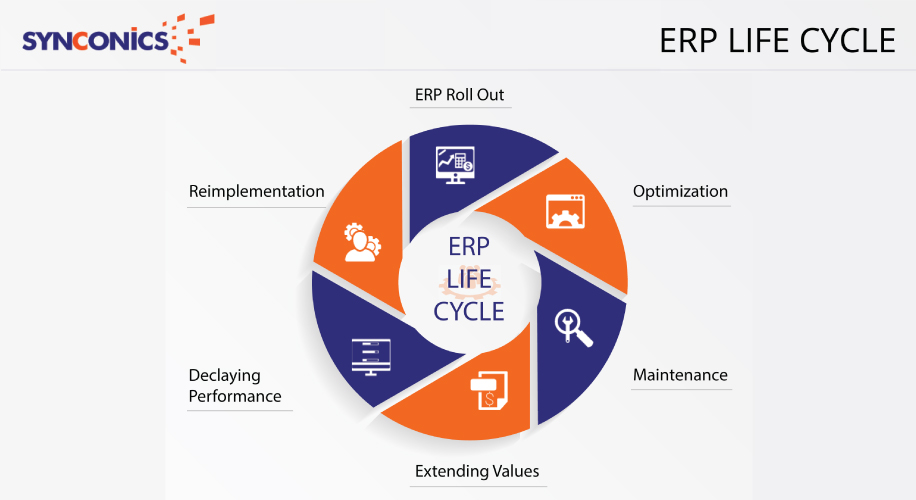ERP Life Cycle
The life cycle of information systems represents the various stages through which a project of development and utilization of information systems passes. In its traditional form, the systems development life cycle encompasses project definition, system study, design, programming, installation and post-implementation stages. The steps in the life cycle process are complex. From birth to death of your ERP, there are a multitude of issues to keep in mind.

ERP Implementation Life Cycle is the process of implementation of enterprise resource planning in any organization. It involves many steps and stages right from the start, planning for project implementation, analysis, design, implementation, transition, and operations. ERP implementation lifecycle highlights the different phases of implementing an ERP system. It starts from the projection of the ideal ERP package that is suitable for the company. The steps involved in the life cycle of the ERP implementation are:
Evaluation & Selection: As enterprise systems are considerable investments, they are worth the effort of a comprehensive Request for Proposals (RFP) process. Your RFP should take into consideration both system requirements and the implementation process.
ERP Roll out The initial rollout of an ERP system itself consists of various phases commencing with Request for Proposal (RFP) and vendor selection and ending with go live and hand holding phase. Some important matters concerning this phase, as given below, will have a direct bearing on subsequent phases of the ERP lifecycle:
Degree of matching of vanilla ERP product to current business, need an extent of customization, particularly source code customization.
The commitment of the vendor to future development and their financial health
Support issues include License fees and escalation thereof.